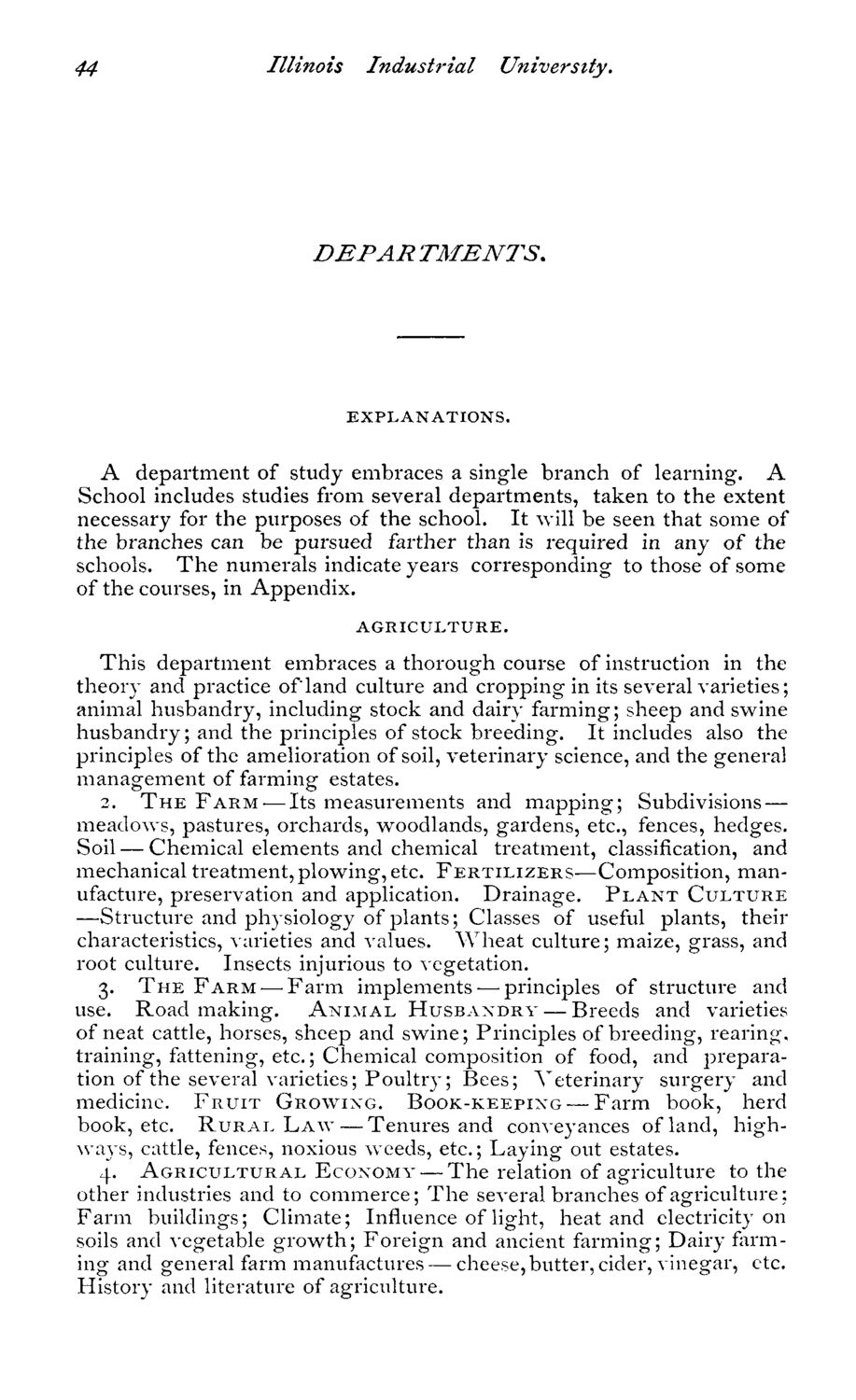| |
| |
Caption: Course Catalog - 1874-1875
This is a reduced-resolution page image for fast online browsing.

EXTRACTED TEXT FROM PAGE:
44 Illinois Industrial University. DEPAR TMENTS. EXPLANATIONS. A department of study embraces a single branch of learning. A School includes studies from several departments, taken to the extent necessary for the purposes of the school. It will be seen that some of the branches can be pursued farther than is required in any of the schools. T h e numerals indicate years corresponding to those of some of the courses, in Appendix. AGRICULTURE. This department embraces a thorough course of instruction in the theory and practice ofland culture and cropping in its several varieties; animal husbandry, including stock and dairy farming; sheep and swine husbandry; and the principles of stock breeding. It includes also the principles of the amelioration of soil, veterinary science, and the general management of farming estates. 2. T H E F A R M - — I t s measurements and mapping; Subdivisions — meadows, pastures, orchards, woodlands, gardens, etc., fences, hedges. Soil — Chemical elements and chemical treatment, classification, and mechanical treatment,plowing, etc. FERTILIZERS—Composition, manufacture, preservation and application. Drainage. P L A N T C U L T U R E —Structure and physiology of plants; Classes of useful plants, their characteristics, varieties and values. Wheat culture; maize, grass, and root culture. Insects injurious to vegetation. 3. T H E F A R M — - F a r m implements — principles of structure and use. Road making. A N I M A L H U S B A N D R Y — Breeds and varieties of neat cattle, horses, sheep and swine; Principles of breeding, rearing, training, fattening, etc.; Chemical composition of food, and preparation of the several varieties; Poultry; Bees; Veterinary surgery and medicine. F R U I T G E O W I X G . BOOK-KEEPING — Farm book, herd book, etc. R U R A L L A W — Tenures and conveyances ofland, highways, cattle, fences, noxious weeds, etc.; Laying out estates. 4. A G R I C U L T U R A L ECONOMY — The relation of agriculture to the other industries and to commerce; The several branches of agriculture: Farm buildings; Climate; Influence of light, heat and electricity on soils and vegetable growth; Foreign and ancient farming; Dairy farming and general farm manufactures — cheese, butter, cider, vinegar, etc. History and literature of agriculture.
| |